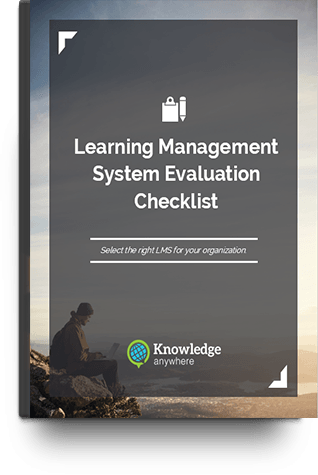Similarly to purchasing your first LMS, switching to a new LMS can be a daunting and complicated task. With various components to consider, it’s important to understand how the migration process works with your new LMS provider, so your employees can spend more time learning.
The most important factor to keep in mind when migrating to a new LMS is to migrate to a better platform.
Different does not always equal better.
You need a platform that supports your long-term organizational goals. Do your homework before you leave your current LMS provider because it will immensely help the transitional process.
Here are the top 4 tips for migrating to a new LMS.
1. Migrating Content
Migrating content is the first priority. You have built or bought custom courses for your learners, so it’s important to transfer that information over in an easy, streamlined process. Questions to ask yourself:
- What types of courses do you own?
- Do these courses need to be transferred?
- Consider every type of training course you have created. This can include SCORM, classroom, and several others. Ask your new LMS provider what the process is for transferring over the courses and how long it will take.
- This is a time to update and renew. Know which courses are necessary to transfer over and which ones are outdated.
2. Migrating User Information
The next area to consider is migrating all of your users over into the new system. This includes all of the personal information on their learner profile.
Over the years, your organization may have accumulated many user profiles that are no longer being used, so this is a perfect time to decide who should be transferred over. This could include all of the active users in the system, everyone who has ever used the system, or a mixture of the two. Again, it is important to ask what the process will look like for transferring all of this information, how long the process will it take, and will there be any extra chargers.
3. Migrating User Transcripts
With your previous LMS, learners completed course, earned certificates, and are most likely in the process of completing more courses. This means that migrating user transcripts is very important to consider. Questions to ask yourself:
- What information do you need transferred?
- Do you want all of the user transcript information to be sent over? Is there a cutoff period? Over the years, courses have come and gone, meaning that information about courses that are no longer available could be useless to transfer over. Carefully consider what is necessary and what is cluttering up your system.
4. Migrating Integrations
The final area to consider is migrating over integrations you previously used with your old LMS. With your previous LMS, you may have been able to seamlessly integrate SalesForce or Google Analytics into your system. Make sure that your new LMS provider can easily integrate with the programs that are necessary for your organization and have the ability to add new integrations.
As your organization moves forward in migrating from one LMS to another, make sure that you are thoroughly communicating to your employees about the new platform. This will ensure that your employees will be excited and start using the new platform right away.
About Knowledge Anywhere
Knowledge Anywhere is an eLearning company focused on providing flexible, modern learning and development solutions that enable organizations to harness the power of an engaged, knowledgeable workforce.
Our Learning Management System, Virtual Reality Training, and Course Development services, combined with our experience and customer support enables our users to create a learning and development program that boosts sales and drives company growth.
Similar Posts
Learn how you put education at the center of your organization with these great articles and resources.


 Learning Management System Evaluation ChecklistThis checklist will guide you through selecting the right elearning training solution for your organization based on your unique needs.
Learning Management System Evaluation ChecklistThis checklist will guide you through selecting the right elearning training solution for your organization based on your unique needs.

